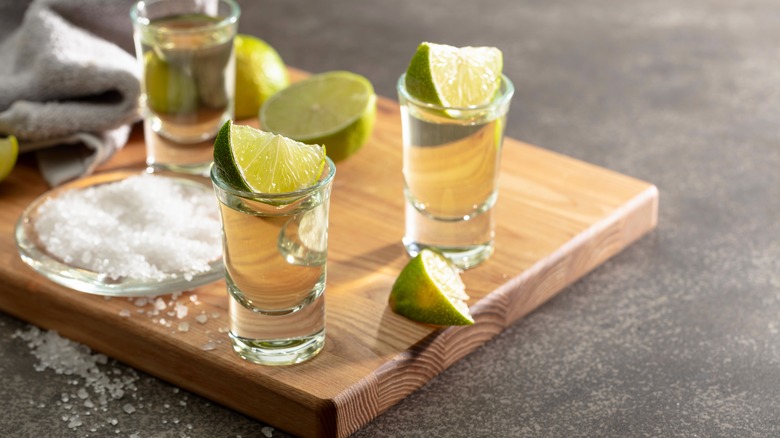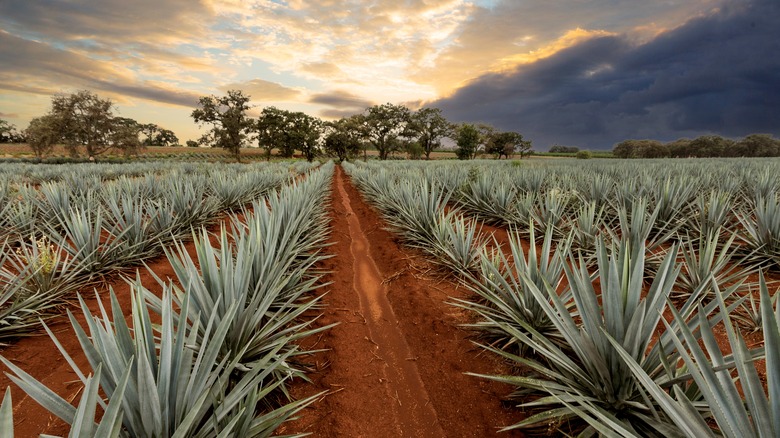All Tequilas Need To Follow One Crucial Ratio For Authentication
Served in a shot glass with salt and lime or shaken in a fresh batch of spicy margaritas — whatever your preference, any tequila must follow one crucial rule to be considered authentic; 51% of its fermentable sugar must come from the blue agave plant.
The Mexican government has strict regulations regarding what counts as tequila. Its source, production, manufacturing, and bottling all must meet specific standards. Even the label has to follow guidelines and display certain details on the front and reverse side of the bottle.
125 species of agave grow in Mexico, but only one can be used to make tequila — the Blue Weber Agave, commonly known as the blue agave. Regulations permit additives like caramel coloring, natural oak or Encino oak extract, glycerin, or sugar-based syrup to soften the tequila's flavor — a process called mellowing. But, only up to 49%. Because, according to the rules, all tequila must meet that formulation ratio: 51% of fermentable sugar must come from the blue agave.
The ancient art of tequila making
People have been making tequila in Mexico for centuries, all the way back to 1000 B.C. The Olmecs, a Mexican civilization that predates the Aztecs, made early versions of tequila called pulque, a milky liquor made from agave. Later, the Aztecs continued the tradition of preparing liquor from agave, as evidenced by stone wall carvings from 200 A.D. They were so serious about their pulque that they worshiped gods associated with the spirit.
Centuries later, Mexicans have carried on their ancestral tradition of tequila making. They've perfected the art form through generations, developing specifications to achieve superior flavors and the best tequila. The planting season, soil, type of agave, time of harvest, fermentation, distillation, and aging process each play a role in achieving that perfect product.
Tequila making starts by growing and harvesting the blue agave. Its bluish leaves are cut away to reveal its core, called the piña. Baking and shredding the piña extracts its juices, called mosto. Next, the mosto, combined with yeast and water, goes through the fermentation process in stainless steel tanks or wooden barrels. Distilling the fermented mosto twice concentrates the alcohol and produces that clear, unaged tequila. At this point, producers often throw in additives before bottling to improve the taste. Optional aging in an oak barrel deepens the tequila's flavors and coloration for a more full-bodied, aged tequila like añejo or extra añejo.


